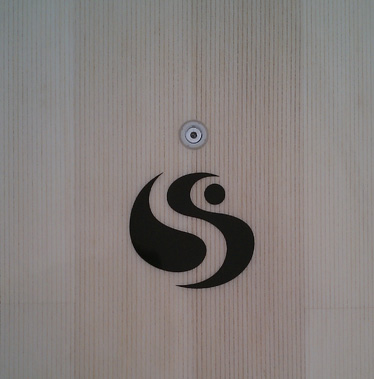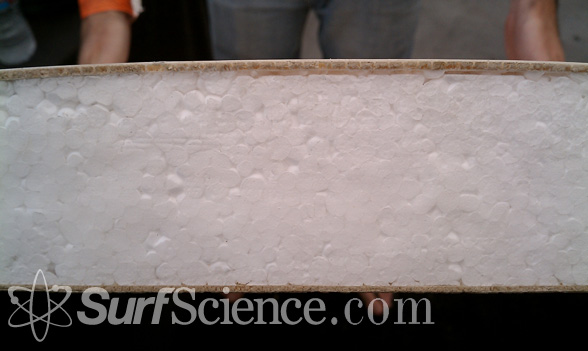Shaper Interviews
Bert Burger: Parabolic Stringers
 Bert Burger has been tinkering with surfboard construction for over a decade and the results have drawn quite a lot of attention. His board designs led to an involvement with Firewire surfboards but recently he has gone another direction and is working on his own line, Sunova Surfboards. Some of the concepts he is experimenting with remain the same; flex patterns, new construction, etc, but he has done a few new things that are turning heads.
Bert Burger has been tinkering with surfboard construction for over a decade and the results have drawn quite a lot of attention. His board designs led to an involvement with Firewire surfboards but recently he has gone another direction and is working on his own line, Sunova Surfboards. Some of the concepts he is experimenting with remain the same; flex patterns, new construction, etc, but he has done a few new things that are turning heads.
SurfScience.com sat down with Bert to discuss the evolution of his shaping theory and what aspects he feels are the most important.
SurfScience: Bert Burger Over the past decade you've developed a unique board theory. Tell us a bit more about how it came to be. Bert Burger: My theory covers two main topics; surfboard construction & surfboard design.
Bert Burger: My theory covers two main topics; surfboard construction & surfboard design.
The whole process started from feeling that I had reached a static point with performance in my conventional PU boards at the time. Shape was refined to what worked best, any time you strayed too far in any one variable, you got different, not always better, but for certain conditions some magic, which was always offset by a loss in another area.
My PU boards were performing, but 12 weeks was all I could get from a board that was because I built the lightest possible board. I was chasing performance that the materials could deliver but the durability was compromised.
SS: Is that when you began experimenting with new materials? BB: Yes, that’s when the composite journey started. Eventually as we learned to make a functional composite surfboard outlast & outperform existing technology, we realized we could explore design because the materials offered a greater range of shapes that wouldn't be structurally possible in conventional materials.
BB: Yes, that’s when the composite journey started. Eventually as we learned to make a functional composite surfboard outlast & outperform existing technology, we realized we could explore design because the materials offered a greater range of shapes that wouldn't be structurally possible in conventional materials.
We learned that if we wanted to mimic the feel of a conventional board, we had to slightly alter some curves and dimensions on the boards. If we copied a shape exactly we got a different feel. So as a result we were exploring our best shapes, altering curves and changing how we built the boards. In composite construction there is a new list of ingredients. They can be arranged in different ways and in different amounts and each time you will get a different result.
It became obvious that a design had to be relevant to how and what the board was built from. The materials moved and flexed in different ways, therefore design could be altered to best capture the positive aspects of the new materials. This was Pandora’s box - the static feeling was gone.
SS: One of the big design aspects you have worked with is the parabolic stringer. What do you see as the major benefits of this change? BB: Projection, Strength & Higher Performance. The stringer is the magic bit. Your stringer is the bit that makes your board spring back to its original position after its been flexed. It also transfers rider energy through the length of the board.
BB: Projection, Strength & Higher Performance. The stringer is the magic bit. Your stringer is the bit that makes your board spring back to its original position after its been flexed. It also transfers rider energy through the length of the board.
It is really an interesting feeling riding a PU stringerless board. Its just dead and floppy. At one point in time conventional surfboards were built stringerless. Even though most people would conclude that a surfboard would be stronger with a stringer. That wasn't the case. A stringerless board could bend further before it snapped, therefore absorbing more force over a longer period.
The stringer was needed for performance. Quote Len Dibben "Those old stringerless didn't break, we put stringers in because they didn't go." The boards needed to have something that stiffened them up and make them spring back to the shape quicker. That gives a basic picture of what the stringer does.
SS: How does the stringer come into play when we’re engaging the rail on a turn?
BB: As we get further away from our stringer we are relying on materials that don't transfer energy as quickly or as efficiently. The stringer will transfer energy the length of the board but not out to the rails. The harder we surf off our rails the harder we need to work.
This means when we put a board hard on rail so the stringer is out of the water we are then relying purely on foam and resin to hold us in, as well as project us into the next turn. There is a stringer line and a rail line as we load into a turn. The rail line on a conventional board will bend easier & twist off with more curve relative to the stringer line. Picture a flat bottom square tail loading into a bottom turn. The rail that is in the water will load, bend a create roll & V off one side. As surfboards have become thinner, lighter, more flexible, there comes the need for a noticeable concave. This offsets the flex so the bottom of the board is in a more favorable position when being loaded though a turn.
There is a stringer line and a rail line as we load into a turn. The rail line on a conventional board will bend easier & twist off with more curve relative to the stringer line. Picture a flat bottom square tail loading into a bottom turn. The rail that is in the water will load, bend a create roll & V off one side. As surfboards have become thinner, lighter, more flexible, there comes the need for a noticeable concave. This offsets the flex so the bottom of the board is in a more favorable position when being loaded though a turn.
If we place our stringer on the rail line it stiffens up the rail. It allows a greater range of flex in the whole board. When the rail is loaded hard into a turn and is made to flex, the string back occurs right there at the rail. The rail that is engaged with the water already, you can push right off the loaded rail and feel it want to project or spring you into the next turn. It makes the board respond quicker so you can leave tight turns until the last second. I remember when Munga stepped on one back in 2005. First surf and feed back was - difficult to time. I made the comment "Just leave it as late as possible and push hard, the more you put in the more it gives back". Munga comes back after the next surf raving. He passes similar comments on to Taj, who went on to say "you put 100% in and it gives you back 120%.
Conclusion
By experimenting with the elements of surfboard construction, Bert was able to achieve a new feel that required a new shape in order to handle the same way as a PU board. When looking forward at where we will find the next step in the evolution of durability, performance and cost, experimentation is the key and those that are willing to be unconventional will lead the way.















1 Comment